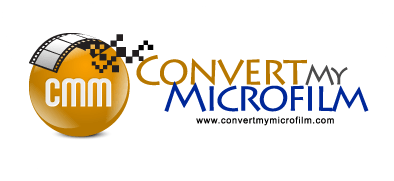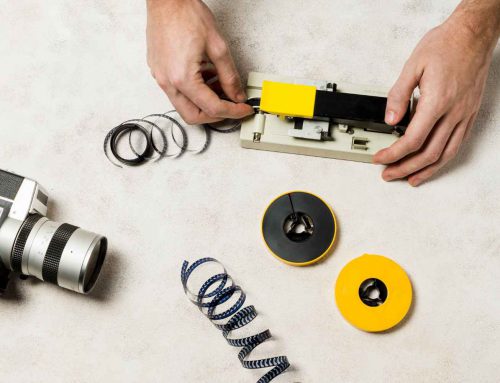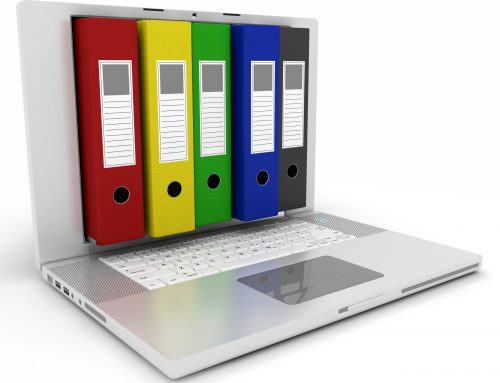If you save your information in Microfilm, you may know how difficult it is to find the right roll or slide and place it into a reader to find the correct data. The whole process takes around one hour or even more than that. But what if you will do all this in less than a minute? It may sound absurd, but you have read it right.
This is possible with Microfilm digitizing.
Since most things around us are going digital, then why not digitize your Microfilm. Well, this will enable you to access and share your data easily; even it will cut down the need for storage space.
You may think you need a lot of money and time to convert Microfilm to digital. The answer is – Get in touch with the right vendor!
Convert My Microfilm offers Microfilm digitizing services at unbeatable prices while maintaining the guaranteed best quality. We utilize state-of-the-art technology and advanced scanners to produce top-quality images with utmost care.
What exactly is Microfilm?
Microfilm is a type of Microform record storage that uses a roll of photographic film to keep a copy of the original hard copy in a significantly smaller format. Rolls of Microfilm are typically 16mm or 35mm in height, making it easier to store the collection.
The 16mm roll is used for standard-sized documents, such as letter-sized sheets measuring 8.5 by 11 inches. On the other hand, the 35mm roll is more suitable for large-format documents, such as architectural or engineering drawings. The roll can contain up to 600 drawings or 2,500 pages on a roll or reel and sometimes many more smaller images.
However, over time Microfilm will degrade. Thus, you can lose your important information if you don’t have a backup. This is why it is best to convert Microfilm to digital so that you can keep them forever.
How much does the digitization of Microfilm cost?
“How much would it cost to convert Microfilm to digital?” is one of the most common questions we hear from librarians, police agencies, institutions, colleges, and other groups interested in digitizing their Microfilm collections.
Well, the cost of Microfilm digitization depends on multiple factors.
Significant Factors that Can Affect the Cost of Microfilm Digitization Project
Numerous factors affect the total price of Microfilm digitization. To get the best possible price, you should browse for Microfilm scanning services, compare their services and price, and choose the one that suits your requirements and budget.
Here are some other factors that influence the cost of Microfilm digitizing:
-
Typical Types of Microform
Microfilm refers to any Microphotographic reproduction of manuscripts, books, maps, and other documents. But technically, the correct term is microform, which comprises Microfilm, Microfiche, aperture cards, and other types of films.
- Microfilm: Available in 100- or 215 feet long rolls with either 16mm or 35mm frame sizes.
- Microfiche: Typical types are jacket fiche (16mm or 35mm) also step-and repeat and COM fiche
- Aperture Cards: Most common have one 35mm frame per card, while some contain multiple 16mm photos per frame.
Aperture cards come in two general formats: Hollerith and Non-Hollerith.
Hollerith or punched cards consist of several holes – where the card was punched to indicate the naming and indexing value. The code in a Hollerith card could be read by a card reader that automatically determines the position of each punched hole.
On the other hand, Non-Hollerith cards don’t have Hollerith punches. They usually have image indexing information on the top of the image.
At Convert My Microfilm, we scan all types of aperture cards, including punched cards that have a 16mm or 35mm image area.
-
Number of Units to Be Converted
The number of images to be scanned and units to be converted influences the total cost. The discrepancy between “rolls to be converted” and “images to be scanned” may appear inconsequential; nonetheless, when requesting estimates for Microfilm conversion, you must check whether the vendor costs per roll or per image.
Most Microfilm scanning service providers offer volume pricing (the price per roll). If you are looking for an affordable way of Microfilm digitizing, it will be best to convert your whole collection into a single project
Convert My Microfilm provides Free Sampling on every project upon your request. We offer guaranteed unbeatable prices that allow you to convert Microfilm to digital while saving huge money.
-
Condition of Original Material
Microfilms are fragile in nature. That’s why they need to be stored in a controlled environment – specifically intended for Microfilm storage. Damaged and dirty Microfilm requires repair before scanning, which further adds to the total cost.
-
Indexing Requirements
One of the greatest advantages of digitizing documents is that it makes information searchable, but only if properly indexed during the scanning phase. The addition of searchable metadata to a scan facilitates the search and discovery of data. However, it involves additional work and will certainly increase the project’s total cost.
At Convert My Microfilm, we provide indexing, data entry, and naming of files as per your requirements. We consider how you would like to label your data and whether you want special indexing by chapter, title, date, roll of film, etc.
In addition, we use OCR (Optical Character Recognition) technology that allows us to convert scanned documents and images into a content searchable format.
-
Final Delivery and Storage
The storage and distribution requirements for the digital files generated from a scanning effort are additional factors to consider. Numerous businesses choose to store their digitized Microfilm on a secure cloud-hosted internet portal that provides immediate access to the data. The entire cost for this form of storage may depend on the needed level of security and the cloud storage method employed.
While some companies choose to store their Microfilm data in other storage devices. Convert My Microfilm will deliver output to CD-ROM, DVD, External Drive and FTP. Moreover, we offer a total record management solution to manage the active and inactive records that provides access to information from a single and interactive interface.
Onsite Digitization Vs. Outsourced Microfilm Conversions: How Outsourcing a Microfilm Conversion Project is Better?
-
Saves Expenses Related to Staffing
In order to convert Microfilm to digital, you need a specialized team and extensive knowledge and experience in the field. To hire an experienced team, you need to spend a lot of time and money that can affect your business.
So, it’s best to contact an experienced and reputable Microfilm scanning service provider, like Convert My Microfilm. At CMM We have state-of-the-art Microfilm digitizing equipment, a team of QC experts, project managers, and scanning technicians that ensures optimal quality and seamless project delivery within the deadline.
-
Save Business Time
A Microfilm scanning company has a specialized team with years of experience in document management that maximizes productivity by scanning all documents in the most cost-effective manner possible.
Convert My Microfilm offers a quick turnaround time to help you get your physical archive collection digitized as soon as possible; thus, saving you a lot of time.
-
Reduce the Need for Storage Area
If you decide to convert Microfilm to digital in-house, you need a lot of space to store the physical copies. This will eat up your office space….which you definitely don’t want. (Move this at the bottom)
Outsourcing your Microfilm conversion project will take this burden from you. They have a huge storage capacity to put multiple scanning units. So, don’t stress about the huge storage space. Just simply outsource your project.
-
Know the Initial Costs
Often, companies decide to convert Microfilm to digital in-house, but they end up spending more than their budget.
On the other hand, when you outsource your project, the provider will give you a quote in advance. This will help you make an informed decision and get the project done within the budget. But make sure the quote includes all the hidden fees and expenses.
-
Concentrate on Your Firm
Does your company’s mission statement include “Scanning a massive backlog of documents”? No, it’s not. In no way can the document scanning process help you achieve your long-term business goals. So, why spend your time scanning the Microfilm? Leave this task and hire a Microfilm scanning provider. This will allow you to concentrate more on your resources and objectives.
-
Quality processing
For high-quality digital images, you need advanced software and scanners. Outsourcing your project will ensure that the scanned images are of high quality.
At Convert my Microfilm, we have tailored a special monitoring process to provide the highest quality and accuracy. We use image enhancement software and carefully digitize your precious Microfilms with safety. Also, we give one year warranty on each project so that you can get assured about the quality of scanning.
-
Reduce the Need for Storage Area
If you decide to convert Microfilm to digital in-house, you need a lot of space to store the physical copies. This will eat up your office space….which you definitely don’t want. (Move this at the bottom)
Outsourcing your Microfilm conversion project will take this burden from you. They have a huge storage capacity to put multiple scanning units. So, don’t stress about the huge storage space. Just simply outsource your project.
Have a project on your mind? Contact us now and get an instant quote for your requirements.





![Why Do You Need Microfilm Digitization Services? [Infographic]](https://convertmymicrofilm.com/wp-content/uploads/Microfilm-reels-and-digitization-services-500x383.jpeg)
Leave A Comment